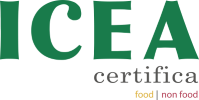EU Organic Aquaculture (Regulation (EC) No. 834/07)
It certifies agricultural products, processed agri-food products, feed and pet food, aquaculture products, algae and microalgae (spirulina), yeasts.
It guarantees the conformity of organic production at all stages of the production chain, from farm to table, in compliance with the EU regulations. (Regulation (EC) No. 834/07 and (EC) No. 889/08)
What it is certified
Aquaculture
Aquaculture is defined as a set of activities aimed at the controlled production of aquatic organisms. In particular, it is possible to distinguish fish farming, mollusc farming, crayfish farming and algae farming.
If developed and implemented responsibly, aquaculture may represent a significant contribution to global food security and economic growth.
The exploitation of fish stocks, animal welfare, product safety and quality and consequently the protection of the marine environment have led the EU Commission to define the requirements for organic aquaculture.
In July 2010 Regulation No. 710/2009 came into force in Europe; it amended Regulation (EC) No. 889/08 and introduced technical standards for organic aquaculture.
An excellent opportunity for European aquaculture which, to face a highly competitive and globalised market, shall inevitably aim at production systems that guarantee a high level of product quality and maximum respect for the environment.
In addition to animal welfare, organic aquaculture also pays particular attention to environmental problems, by verifying the quality of the places where farming takes place.
The feed used shall meet specific nutritional requirements. Fish meals and fish oils can be used if resulting from discarded fish and, in any case, within a context of certified sustainable fishing.
Animal health management should aim at disease prevention. Significant restrictions are also imposed on the use of raw materials for feed, cleaning and disinfection products.
Fish from organic aquaculture has high organoleptic qualities and it is produced without using GMOs.
Organic certification helps to reduce the company’s impact on the environment and, in many cases, protects sensitive habitats.
Organic algae
European legislation also includes criteria for the organic farming of marine algae (seaweed). Harvesting of wild marine algae in areas of high ecological quality (Directive 2000/60/EC) is also an organic production method provided that this activity does not endanger the long-term stability of the natural habitat or the protection of species in the collection area.
How to certify
The certification process is divided into five main phases:
- Notification of organic production activities to the competent authority through the Biological Information System (SIB) or similar regional systems. The operator shall declare the type of activities, production units and activity chains subject to control. Aquaculture farms shall state the production units where organic production takes place, including any subcontractors not directly subject to the control system.
- Initial assessment of the production process, the operator shall submit a management plan in order to describe all the measures he intends to take to comply with the organic requirements relating to the activity carried out. Aquaculture industry operators shall present the management plan for aquaculture farming in accordance with the Guidelines for Organic Aquaculture, the Annual Programme for Aquaculture Production (PAPA); a list of feed and other organic products suppliers required for aquaculture farming purposes shall also be drawn up.
- Start-up inspection to verify the correct application and effectiveness of declared management plan measures and other related documents. In addition, the suitability of the structures and the correct management of the company’s production processes are assessed as required by the European regulations for the different fields of activity.
- The issue of Documentary Evidence and Certificate of Conformity based on the information and data collected as part of the assessment and verification process. The Certificate of Conformity lists the certified products. In the case of aquaculture production, there is no provision for products to be marketed with the indication “in conversion to organic farming”.
- Annual surveillance through periodic inspections and planned analyses based on a careful risk analysis, aimed at confirming the maintenance of compliance conditions and the punctual and accurate keeping of the obligatory records required for control purposes.
Documents and downloadable files
[button color=”green” size=”normal” alignment=”none” rel=”follow” openin=”newwindow” url=”https://www.icea.bio/wp-content/uploads/2017/01/2.-M0202-Regolamento-Tecnico-834-Ed03-Rev00-Certificazione-Biologica-EU-Europa-ICEA-Istituto-di-Certificazione-Etica-e-Ambientale.pdf”]Regulation for certification[/button]
[button color=”green” size=”normal” alignment=”none” rel=”follow” openin=”newwindow” url=”https://www.icea.bio/wp-content/uploads/2017/01/3.-M0201-Contratto-certificazione-834-Ed02-Rev04-Certificazione-Biologica-EU-Europa-ICEA-Istituto-di-Certificazione-Etica-e-Ambientale.pdf”]Contract for certification[/button]
[button color=”green” size=”normal” alignment=”none” rel=”follow” openin=”newwindow” url=”https://www.icea.bio/wp-content/uploads/2017/01/4.-L0208-Linee-guida-per-lacquacoltura-biologica-Ed02-Rev02-Certificazione-Biologica-EU-Europa-Acquacoltura-e-alghe-ICEA-Istituto-di-Certificazione-Etica-e-Ambientale.pdf”]Guidelines[/button]
[button color=”green” size=”normal” alignment=”none” rel=”follow” openin=”newwindow” url=”https://www.icea.bio/wp-content/uploads/2017/04/10.-Da-caricare.doc”][/button]
[button color=”green” size=”normal” alignment=”none” rel=”follow” openin=”newwindow” url=”https://www.icea.bio/wp-content/uploads/2017/04/11.-Da-caricare.doc”][/button]
Contact ICEA
ICEA Piemonte, Liguria and Valle D’Aosta

